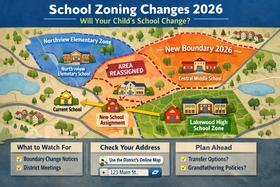Serving 720 students in grades Kindergarten-5, Woodland Elementary School ranks in the top 5% of all schools in Minnesota for overall test scores (math proficiency is top 5%, and reading proficiency is top 5%).
The percentage of students achieving proficiency in math is 81% (which is higher than the Minnesota state average of 46%). The percentage of students achieving proficiency in reading/language arts is 71% (which is higher than the Minnesota state average of 51%).
The student-teacher ratio of 16:1 is higher than the Minnesota state level of 13:1.
Minority enrollment is 26% of the student body (majority Asian and Black), which is lower than the Minnesota state average of 39% (majority Black and Hispanic).
Quick Facts (2025-26)
- Grades: Kindergarten-5
- Enrollment: 720 students
- Student-Teacher Ratio: 16:1
- Minority Enrollment: 26%
- Overall Testing Rank: Top 5% in MN
- Math Proficiency: 81% (Top 5%)
- Reading Proficiency: 71% (Top 10%)
- Science Proficiency: 65-69% (Top 10%)
- Source: National Center for Education Statistics (NCES), MN Dept. of Education
Top Rankings
Woodland Elementary School ranks among the top 20% of public schools in Minnesota for:
Category
Attribute
Overall Rank
Math Proficiency
Reading/Language Arts Proficiency
Science Proficiency
School Overview
Woodland Elementary School's student population of 720 students has grown by 14% over five school years.
The teacher population of 45 teachers has grown by 12% over five school years.
Grades Offered
Grades Kindergarten-5
(No virtual instruction)
(No virtual instruction)
Total Students
720 students
Gender %
Total Classroom Teachers
45 teachers
School Calendar
Last Day of School
Fri. Jun 5, 2026
School Rankings
Woodland Elementary School ranks within the top 5% of all 1,773 schools in Minnesota (based off of combined math and reading proficiency testing data).
The diversity score of Woodland Elementary School is 0.44, which is less than the diversity score at state average of 0.59. The school's diversity has stayed relatively flat over five school years.
Overall Testing Rank
#69 out of 1773 schools
(Top 5%)
(Top 5%)
Math Test Scores (% Proficient)
81%
46%
Reading/Language Arts Test Scores (% Proficient)
71%
51%
Science Test Scores (% Proficient)
65-69%
41%
Student-Teacher Ratio
16:1
13:1
American Indian
n/a
2%
Asian
10%
7%
Hispanic
5%
12%
Black
5%
12%
White
74%
61%
Hawaiian
n/a
n/a
Two or more races
6%
6%
All Ethnic Groups
Eligible for Free Lunch
10%
36%
Eligible for Reduced Lunch
2%
7%
School Statewide Testing
School District Name
Source: National Center for Education Statistics (NCES), MN Dept. of Education
Profile last updated: 02/09/2025
Frequently Asked Questions
What is Woodland Elementary School's ranking?
Woodland Elementary School is ranked #69 out of 1,773 schools, which ranks it among the top 5% of public schools in Minnesota.
What schools are Woodland Elementary School often compared to?
Woodland Elementary Schoolis often viewed alongside schools like Glacier Hills School - Arts/science, Northview Elementary School by visitors of our site.
What percent of students have achieved state testing proficiency in math and reading?
81% of students have achieved math proficiency (compared to the 46% MN state average), while 71% of students have achieved reading proficiency (compared to the 51% MN state average).
How many students attend Woodland Elementary School?
720 students attend Woodland Elementary School.
What is the racial composition of the student body?
74% of Woodland Elementary School students are White, 10% of students are Asian, 6% of students are Two or more races, 5% of students are Hispanic, and 5% of students are Black.
What is the student-teacher ratio of Woodland Elementary School?
Woodland Elementary School has a student ration of 16:1, which is higher than the Minnesota state average of 13:1.
What grades does Woodland Elementary School offer ?
Woodland Elementary School offers enrollment in grades Kindergarten-5 (No virtual instruction).
What school district is Woodland Elementary School part of?
Woodland Elementary School is part of Rosemount-Apple Valley-Eagan School District.
School Reviews
1 10/10/2025
This school is disappointing on so many levels. The curriculum is focused on teaching children how to take a standardized tests. They teach so the kids will do well on the test and prove then it is a good school. They do not prepare the children for middle school and are full of excuses and false claims when challenged or questioned. They have some teachers that have been their way too long. The basics are not being taught and I worry this is a waste of time for my child.
Review Woodland Elementary School. Reviews should be a few sentences in length. Please include any comments on:
- Quality of academic programs, teachers, and facilities
- Availability of music, art, sports and other extracurricular activities
Recent Articles

Public School Open House & Enrollment Season Guide for Parents
Learn what to ask at a public school open house during enrollment season, from academics to safety, to choose the right school for your child.

School Zoning Changes 2026: How Assignments May Shift
School Zoning Changes 2026 could affect your child’s school assignment. Learn how zoning works, what is changing, and how families can prepare.

School Vouchers: Updated Pros and Cons (2025 Review)
Comprehensive 2025 analysis of school vouchers, weighing benefits and challenges for families, funding, outcomes, and policy directions.





